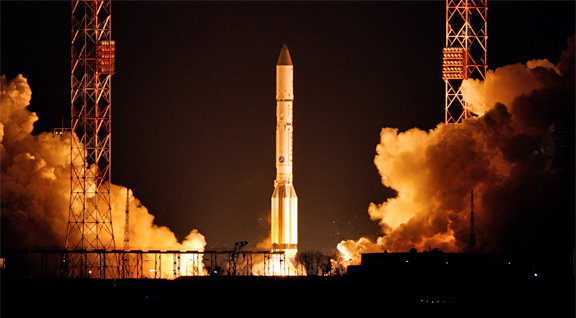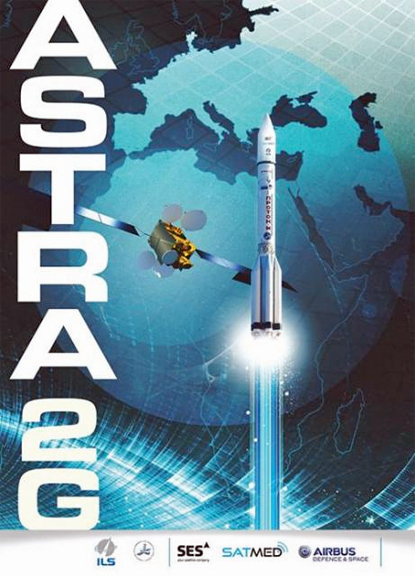[SatNews] Airbus Defence and Space has successfully completed the initial in-orbit testing of ASTRA 2G and has handed over the control of the satellite to SES. who will now validate the performance of its communications payload.

The launch of the ASTRA 2G satellite.
Afterwards, SES will begin operational service at its 28.2/28.5 degrees East orbital location in order to provide next generation broadcast and broadband services.
The ASTRA 2G telecommunications satellite was launched by an ILS Proton Breeze M launcher from Baikonur, Kazakhstan, on December 27, 2014, at 21:24 GMT. Launch and Early Orbit Phase operations have been conducted from the Airbus Defence and Space spacecraft control center in Toulouse. A series of maneuvers enabled the satellite to reach geostationary orbit on 2 January, the solar arrays and antenna reflectors have been successfully deployed and the satellite has acquired final Earth pointing. All spacecraft functions are performing as expected.

Designed and manufactured by Airbus Defence and Space for satellite operator SES, ASTRA 2G is based on the highly reliable Eurostar E3000 platform. It carries 62 Ku-band transponders as well as 4 Ka-band transponders. It will provide next generation broadcast and broadband services to the UK and Ireland, Europe and West Africa. It had a launch mass of 6 tonnes, has a wingspan of 40m in orbit, and a spacecraft power of 13kW until the end of its 15-year design lifetime.
ASTRA 2G is the ninth Eurostar satellite in the SES fleet, following the recent successful launches of ASTRA 2F in September 2012, SES-6 in June 2013, ASTRA 2E in September 2013 and ASTRA 5B in May 2014. Three more E3000s are currently in production for SES.
The Airbus Defence and Space infosite may be reached at http://airbusdefenceandspace.com/
SES information may be obtained at http://www.ses.com/